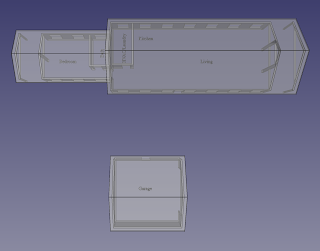The lion den was manely complete with the bathroom & laundry room modeled. It's a very germane design compared to other barndominiums.
In the 1920x1080 reupload department, it's a much sharper wargames.
Some scenes have less information. Ally Sheedy was just starting down her dominant ways.
Another reupload was the Great Gatsby. It's not very visual, but it's a classic.

The 16:9 version is 8 minutes longer than the 4:3 version. Some scenes were cut out of the A&E version, though there are stills from a long lost AMC version which have the deleted scenes. It's always going to rekindle the memories of unattainable love from younger years. In hind sight, Jordan would never have anything to do with a struggling bond salesman, Daisy wasn't worth it from the beginning, & any marriage to Gatsby would have been the same misery as Buchanan.
Today's Linux discovery was the ipcs -l command, which gives not only the maximum size of a shared memory segment, but the maximum number of shared memory segments.
------ Shared Memory Limits --------
max number of segments = 4096
max seg size (kbytes) = 2097151
max total shared memory (kbytes) = 18014398442373116
min seg size (bytes) = 1
The number of segments was quite low for programs which allocate a new segment for every cached frame. It might be acceptable for allocating a new segment for every X11 bitmap.
Cinelerra has always written to /proc/sys/kernel/shmmax to increase the max seg size, but this only works as root. It gives a warning if it couldn't set it.
Increasing the number of segments requires writing to /proc/sys/kernel/shmmni
This number is high enough for sane programs, so the decision was made to move more frame caching to unshared memory. There are other places where it uses shared memory when it doesn't have to, not knowing there was such a low limit on the number of segments.
It also allocates all sample buffers in shared memory. Fortunately, sample buffers aren't allocated in the thousands like frame buffers.
The trick is anything read or written to a file has to be in a shared memory segment. It's very hard to know if a buffer is going to end up being passed to a file handler, since it optimizes the file I/O for the least number of copies, passing the shared memory buffers as deeply into the file routines as possible.


























Comments
Post a Comment